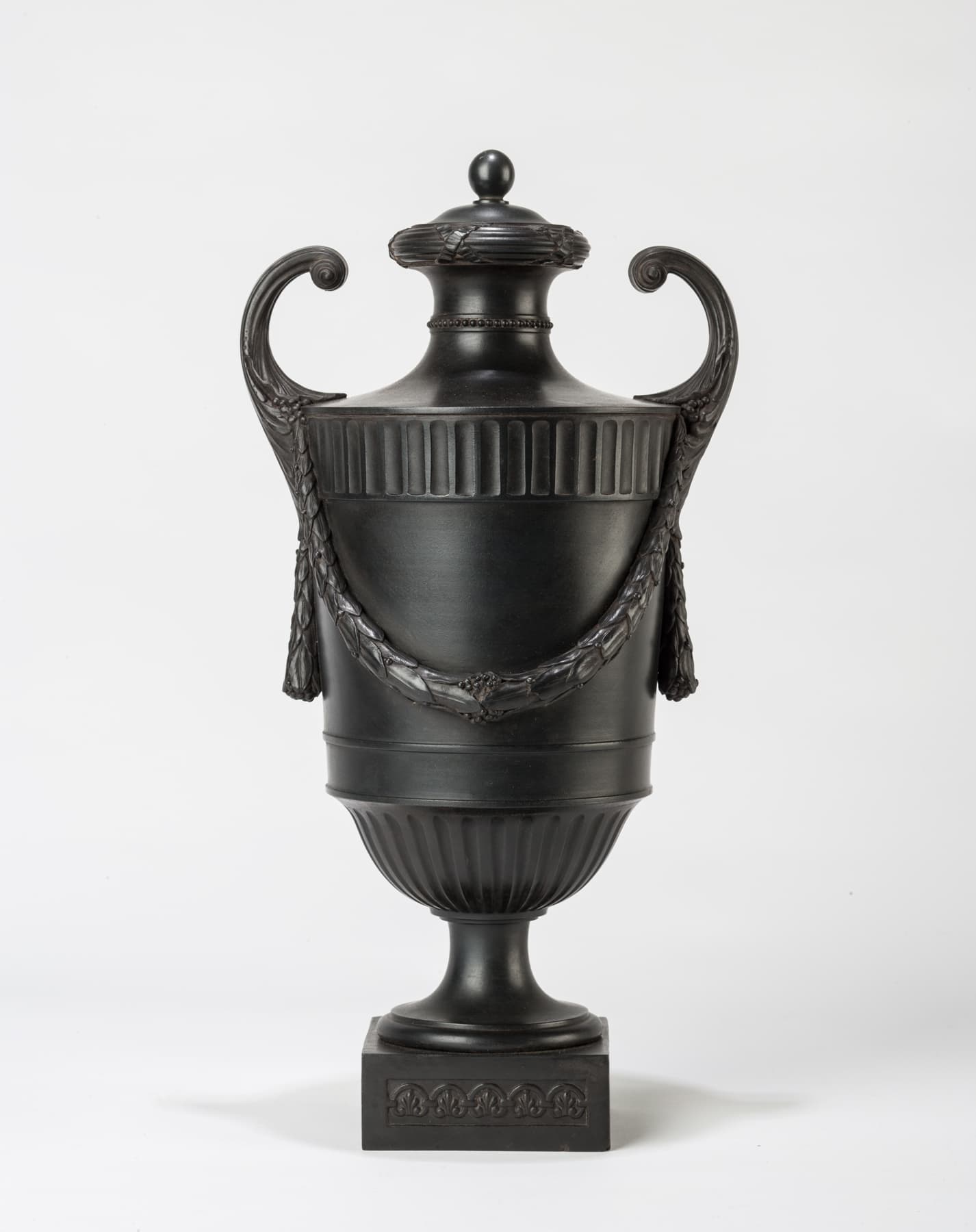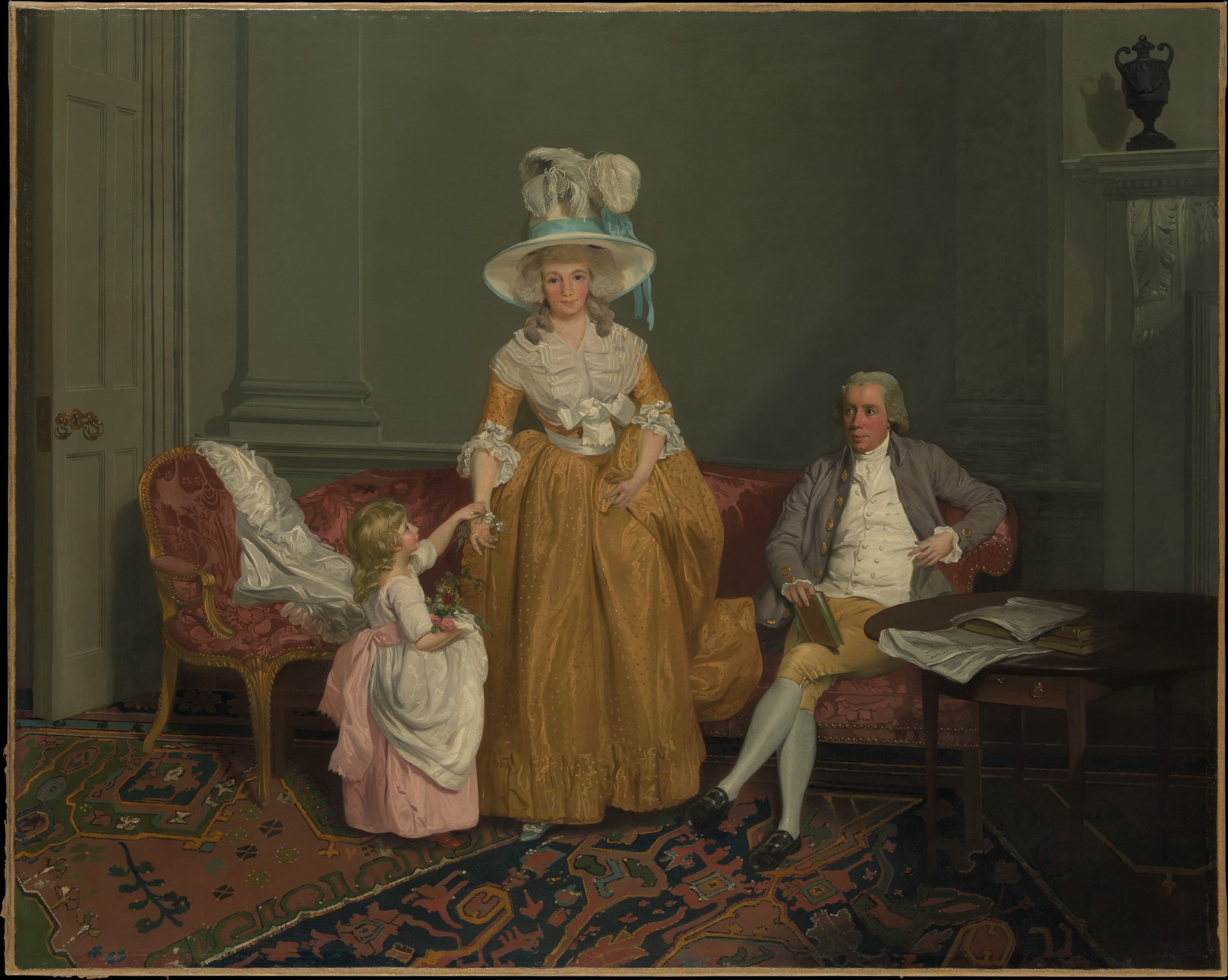In the corner of this painting is an unmistakable Wedgwood & Bentley black basalt vase with upturned handles. I have not located the exact form, but there are similar ones listed below. The painting dates from 1785.
However, the Metropolitan Museum states that “[a]t first glance, the vase on the mantelpiece seems to be a piece of “Black Basalt” (also called “Egyptian black” or “Etruscan ware”), a refined stoneware colored with cobalt and manganese oxides, invented by Josiah Wedgwood (1730–1795) in 1768; however, the painting’s vase seems to have no exact match among ceramics of the period and may, instead, be made of wood, a less expensive alternative to stoneware but one that would nevertheless have served to indicate the owners’ sophisticated, classicizing taste.”
Recently as of 2020, I have located a Wedgwood vase so strikingly similar to the one in the painting that it must be a form produced at the time. What is interesting about material culture is that the facts and knowledge constantly shift as we uncover more and more objects lurking all over the world.

- Wedgwood Black Basalt Vase with Upturned Handles
- Wedgwood & Bentley Black Basalt Vase with Upturned Handles
- Wedgwood & Bentley Black Basalt Vase and Cover
- Wedgwood & Bentley Porphyry Vase and Cover
- Various Wedgwood Vases with Upturned Handles
- Vase in Black Basalt, Wedgwood & Bentley, circa 1773
- Vase in Black Basalt, Wedgwood & Bentley, circa 1773
- Wedgwood & Bentley Black Basalt Urn
- Wedgwood & Bentley Black Basalt Vase with a Cover
- Wedgwood & Bentley Black Basalt Vase and Cover

